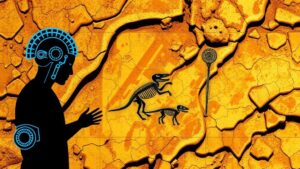Using AI to Detect Patterns in Artifact Discoveries Across Historical Eras
Using AI to Detect Patterns in Artifact Discoveries Across Historical Eras
The integration of artificial intelligence (AI) into archaeological research represents a paradigm shift in our ability to interpret historical artifacts. This article explores various methodologies employed in the application of AI to identify patterns in artifact discoveries across different historical eras, aimed at enhancing our understanding of past human behaviors and sociocultural dynamics.
The Role of AI in Archaeological Research
Artificial intelligence has the potential to process vast amounts of data efficiently, which is particularly valuable in archaeology where researchers are faced with immense datasets from excavations and surveys. AI techniques such as machine learning, deep learning, and natural language processing can be leveraged to extract significant information from images and texts related to artifacts.
Historical Context of Artifact Discoveries
To understand the implications of AI in archaeology, it is crucial to scrutinize the historical context of artifact discoveries. Major archaeological discoveries, such as the tomb of Tutankhamun in 1922 or the Terracotta Army in 1974, have been pivotal in shaping our understanding of ancient civilizations. These discoveries span various eras, including the ancient Egyptians dynastic period (c. 3100-30 BCE) and the Qin dynasty in China (221-206 BCE). Each discovery presents unique insights into human life, governance, and cultural practices.
Methodologies for Analyzing Artifacts Using AI
AI methodologies employed in the analysis of artifacts can be categorized into four main areas:
- Image Recognition: Using convolutional neural networks (CNNs) for identifying and classifying artifacts by analyzing visual features.
- Predictive Analytics: Useing machine learning algorithms to predict the location of undiscovered artifacts based on historical data patterns.
- Natural Language Processing (NLP): Analyzing historical texts to classify and correlate findings with previously discovered artifacts.
- Spatial Analysis: Using GIS (Geographic Information Systems) and AI to understand the spatial distribution of artifacts and uncover settlement patterns.
Case Studies
Several case studies illustrate the effectiveness of AI in enhancing archaeological research. One significant example is the use of AI image recognition systems in the classification of ancient pottery shards. A study in 2019 applied deep learning networks to categorize over 60,000 pottery fragments from the ancient Near East with an accuracy of 85% (Cultural Heritage 2019). Such advancements allow researchers to streamline the analysis process, enabling them to focus on contextual interpretations rather than mere identification.
Another case is the predictive modeling applied in the historical site of Pompeii. Researchers utilized machine learning algorithms to analyze spatial patterns and identify potential excavation sites where artifacts are likely to be found. Their model increased the efficiency of excavation efforts by approximately 30%, leading to the discovery of previously unidentified structures (Journal of Archaeological Science 2020).
Challenges and Ethical Considerations
Despite the promising applications of AI in artifact analysis, several challenges persist. Data quality and availability can hinder the effectiveness of AI systems. Many archaeological datasets are incomplete or biased, which can lead to inaccurate models. Plus, ethical considerations regarding the ownership and preservation of artifacts must be addressed, particularly when AI-driven predictions lead to excavation on sensitive sites.
Also, there is a risk of over-reliance on technology, overshadowing the fieldwork and contextual understanding that are foundational to archaeology. A balanced approach that combines AI capabilities with traditional archaeological methods is essential for maintaining the integrity of findings.
Real-World Applications and Future Directions
Looking ahead, the potential applications of AI in archaeology are vast. With continuous advancements in technology, future research may focus on integrating AI with augmented reality (AR) to create immersive historical reconstructions of sites based on artifact data. This integration could enhance public engagement and educational outreach by allowing users to interact with virtual representations of historical artifacts.
Also, collaborative platforms utilizing AI could facilitate global data sharing, enabling researchers from different regions to contribute to a comprehensive database of artifacts. Such initiatives would enhance comparative studies across cultures and eras, fostering a more nuanced understanding of human history.
Conclusion
The integration of AI into archaeological research marks a significant innovation in the field, offering powerful tools for detecting patterns in artifact discoveries across historical eras. By employing various AI methodologies, researchers can analyze vast datasets to uncover insights that would otherwise remain hidden. But, the challenges and ethical considerations underscore the need for a balanced approach that respects the nuances of cultural heritage. As technology continues to evolve, so too will the methodologies of archaeology, contributing to a more enriched understanding of our shared human past.



